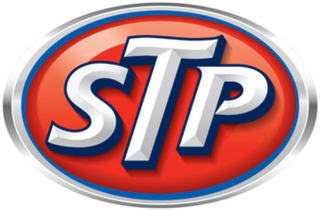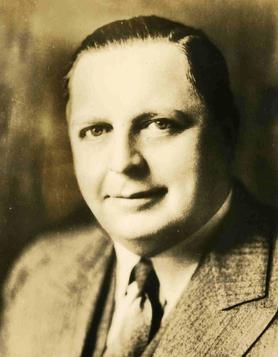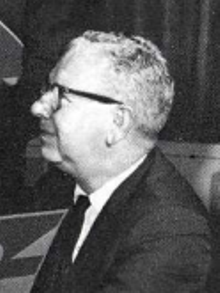Related Research Articles

Packard or Packard Motor Car Company was an American luxury automobile company located in Detroit, Michigan. The first Packard automobiles were produced in 1899, and the last Packards were built in South Bend, Indiana in 1958.

Studebaker was an American wagon and automobile manufacturer based in South Bend, Indiana, with a building at 1600 Broadway, Times Square, Midtown Manhattan, New York City. Founded in 1852 and incorporated in 1868 as the Studebaker Brothers Manufacturing Company, the firm was originally a coachbuilder, manufacturing wagons, buggies, carriages and harnesses.

Nash Motors Company was an American automobile manufacturer based in Kenosha, Wisconsin from 1916 until 1937. From 1937 through 1954, Nash Motors was the automotive division of the Nash-Kelvinator Corporation. As sales of smaller firms declined after 1950 in the wake of the domestic Big Three automakers advantages in production, distribution, and revenue, Nash merged with Hudson Motors to form American Motors Corporation (AMC). Nash automobile production continued from 1954 through 1957 under AMC.

The American Locomotive Company was an American manufacturer of locomotives, diesel generators, steel, and tanks that operated from 1901 to 1969. The company was formed by the merger of seven smaller locomotive manufacturers and Schenectady Locomotive Engine Manufactory of Schenectady, New York. A subsidiary, American Locomotive Automobile Company, designed and manufactured automobiles under the Alco brand from 1905 to 1913. ALCO also produced nuclear reactors from 1954 to 1962.

Montreal Locomotive Works (MLW) was a Canadian railway locomotive manufacturer which existed under several names from 1883 to 1985, producing both steam and diesel locomotives. For a number of years it was a subsidiary of the American Locomotive Company. MLW's headquarters and manufacturing facilities were located in Montreal, Quebec.

Studebaker of Canada Ltd. was the name given to Studebaker Corporation's Canadian manufacturing arm.
The Studebaker-Packard Corporation was the entity created in 1954 by the purchase of the Studebaker Corporation of South Bend, Indiana, by the Packard Motor Car Company of Detroit, Michigan. While Studebaker was the larger of the two companies, Packard's balance sheet and executive team were stronger than that of the South Bend company.

STP is an American brand of automotive aftermarket products, especially lubricants such as motor oil and motor oil additives. The name began as an abbreviation of Scientifically Treated Petroleum. The brand has been owned by Energizer Holdings since November 2018.
Sherwood Harry Egbert was an American businessman and marine. He served as president of the Studebaker-Packard Corporation and Studebaker Corporation from February 1, 1961 to November 24, 1963.
Wagner Electric Corporation was an electric equipment manufacturing firm established in 1891 that became part of Studebaker-Worthington in 1967.
The Weir Group plc is a Scottish multinational engineering company headquartered in Glasgow, Scotland. It is listed on the London Stock Exchange and is a constituent of the FTSE 100 Index.

George Walter Mason was an American industrialist. During his career Mason served as the Chairman and CEO of the Kelvinator Corporation (1928-1937), Chairman and CEO of the Nash-Kelvinator Corporation (1937-1954), and Chairman and CEO of American Motors Corporation (1954).
Gravely, of Brillion, Wisconsin, is a manufacturer of powered lawn and garden implements which it describes as "walk-behind, zero turn and outfront mowers". It started as a manufacturer of "walk-behind" or two-wheel tractors.

The Flowserve Corporation is an American multinational corporation and one of the largest suppliers of industrial and environmental machinery such as pumps, valves, end face mechanical seals, automation, and services to the power, oil, gas, chemical and other industries. Headquartered in Irving, Texas, a suburb of Dallas, Flowserve has over 18,000 employees in more than 55 countries. Flowserve sells products and offers aftermarket services to engineering and construction firms, original equipment manufacturers, distributors and end users. The Flowserve brand name originated in 1997 with a merger of BW/IP and Durco International.
McGraw-Edison was an American manufacturer of electrical equipment. It was created in 1957 through a merger of McGraw Electric and Thomas A. Edison, Inc., and was in turn acquired by Cooper Industries in 1985. Today, the McGraw-Edison brand is used on industrial, commercial, and institutional lighting products, and is now owned by the Pennsylvania Transformer Technologies Inc. Company as of being acquired in 1996.

The Worthington Corporation was a diversified American manufacturer that had its roots in Worthington and Baker, a steam pump manufacturer founded in 1845. In 1967 it merged with Studebaker and Wagner Electric to form Studebaker-Worthington. This company was in turn acquired by McGraw-Edison in 1979.

Worthington-Simpson was a British pump manufacturer. Many of their pumps were used in municipal waterworks in Great Britain.

Randolph H. Guthrie was an American lawyer and businessman who became the chairman of the Studebaker corporation.

Derald H. Ruttenberg was a lawyer who became a deal maker, organizing large industrial mergers. He arranged the merger of Studebaker and Worthington Corporation, and for some time ran the combined Studebaker-Worthington. He provided the financing for the Derald H. Ruttenberg Cancer Center at Mount Sinai Hospital, New York.

Frank J. Nunlist was an American businessman who became chairman of Worthington Corporation, and then of Studebaker-Worthington. After retiring, he was appointed Assistant Postmaster General, Bureau of Operations.
References
Notes
- ↑ Robert Guthrie was also a partner of the law firm of Nixon, Guthrie, Mudge and Mitchell. His partner, Richard Nixon, was to become President of the USA. Another partner, John N. Mitchell, became Attorney General. [1]
- ↑ In 1985 Dresser Industries acquired Worthington-Simpson. In 1992 it became part of Ingersoll Dresser Pumps. As of 2006 the Newark-based pump manufacturer was called Flowserve Pumps. [16]
Citations
- 1 2 Weir 2008, p. 86.
- ↑ Production Shift Seen: 1963.
- 1 2 3 Foster 2008, p. 185.
- ↑ Foster 2008, p. 175.
- 1 2 3 4 Foster 2008, p. 187.
- 1 2 Weir 2008, p. 85.
- 1 2 Studebaker, Worthington Vote Merger.
- ↑ Studebaker History Timeline.
- 1 2 3 4 5 Churella 1998, p. 144.
- 1 2 Caloren, Chossudovsky & Gingrich 1978, p. 51.
- ↑ Schoultz 2011, p. 273.
- ↑ STP History.
- ↑ Caloren, Chossudovsky & Gingrich 1978, p. 52.
- ↑ Weir 2008, p. 84.
- ↑ Weir 2008, p. 111.
- ↑ Roberts 2006, p. 159.
- ↑ Foster 2008, p. 188.
- ↑ Kirk 1997, p. 99.
- ↑ Schoultz 2011, p. 274.
- ↑ Bonsall 2000, p. 396.
- ↑ Perrault 2014.
Sources
- Bonsall, Thomas E. (2000). More Than They Promised: The Studebaker Story. Stanford University Press. ISBN 978-0-8047-3586-5 . Retrieved 2013-10-22.
- Caloren, Fred; Chossudovsky, Michel; Gingrich, Paul (1978). Is the Canadian Economy Closing Down?. Black Rose Books Ltd. ISBN 978-0-919618-81-7 . Retrieved 2013-10-22.
- Churella, Albert (1998-08-03). From Steam to Diesel: Managerial Customs and Organizational Capabilities in the Twentieth-Century American Locomotive Industry. Princeton University Press. ISBN 978-1-4008-2268-3 . Retrieved 2013-10-22.
- Foster, Patrick (2008). Studebaker: The Complete History. MotorBooks International. ISBN 978-1-61673-018-5 . Retrieved 2013-10-22.
- Kirk, John M. (1997). Canada-Cuba Relations: The Other Good Neighbor Policy. University Press of Florida. ISBN 978-0-8130-1520-0 . Retrieved 2013-10-22.
- Perrault, Bruce (2014). "Cummins Onan Engines and Generators - The Early Years". Precise Engine Repair. Retrieved 2014-07-26.
- "Production Shift Seen". Reading Eagle. 9 December 1963. Retrieved 2013-10-22.
- Roberts, Gwilym (2006-01-01). Chelsea to Cairo-- 'Taylor-made' Water Through Eleven Reigns and in Six Continents: A History of John Taylor & Sons and Their Predecessors. Thomas Telford. ISBN 978-0-7277-3411-2 . Retrieved 2013-10-22.
- Schoultz, Lars (2011-02-01). That Infernal Little Cuban Republic: The United States and the Cuban Revolution. Univ of North Carolina Press. ISBN 978-0-8078-8860-5.
- "STP History". STP. Archived from the original on 2013-10-23. Retrieved 2013-10-22.
- "Studebaker History Timeline". StudebakerHistory.com. Archived from the original on 2013-10-21. Retrieved 2013-10-21.
- "Studebaker, Worthington Vote Merger Despite Antitrust". The Montreal Gazette. 16 November 1967. Retrieved 2013-10-22.
- Weir, William (2008-02-01). History of the Weir Group. Profile Books. ISBN 978-1-86197-886-8.